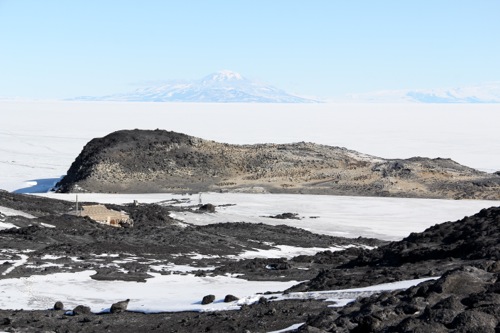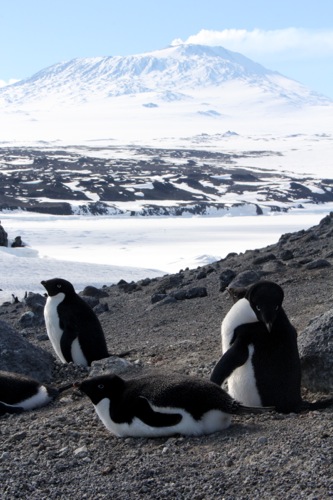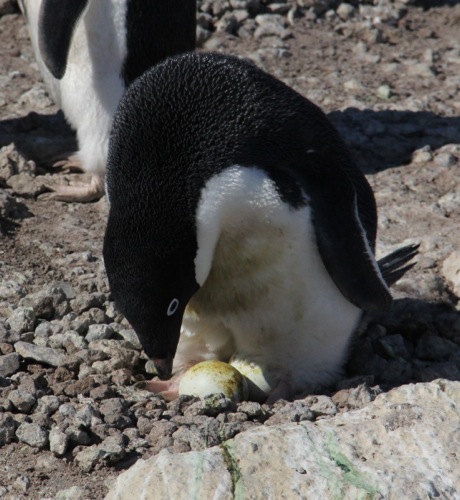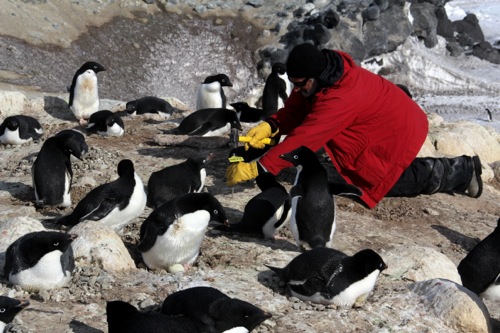
The rock that you sticking above the ice in the photo above has been the nesting grounds for Adelie penguins for 1000's of years. Changes in the penguin population can be indicators of the health and well being of the Antarctic Region, so understanding penguins is important to scientists.
Each year when the chicks are hatched (sometime around mid December) several hundred chicks have a band placed around their left wing with a unique number stamped on it.

So what I've been doing with my time here at Cape Royds is finding penguins with a band and recording their location within the colony. The colony is broken up into a number of sub-colonies (smaller groups of penguins), and scientist do not yet understand how these sub-colonies within the main colony are established or why the penguins join specific sub-colonies. In addition to which sub-colony the tagged penguin is in, we record whether or not they have a mate, are they on their nest or standing next to it, does the nest have any eggs (most penguin pairs have two eggs), and what is the quality of their nest.


The Adelie penguins construct their nest of small rocks. They run around and pick up the rocks using their beaks and bring the rocks back to the nest location. The nests are made of rocks primarily because that's the only thing available. There's no grass, leaves, or wood or anything of the sort for nest construction. But the rocks are quite adequate. Meltwater during the summer can be an issue, so the small stones keep the eggs up off the ground and out of the water. In addition there are air pockets between the small stones that insulate the egg from the ground preventing heat loss.
Finding a tagged bird with an egg in the nest
When we find a tagged penguin with an egg in their nest, we want to track it, so that means the nest gets a fancy yellow "mailbox" number and tag. It's pretty easy if the nest is out near the edge of the sub-colony, but sometimes they're in the middle of the colony, and getting to the interior of the sub-colony isn't easy. We have to be very careful not to disturb the nests so it means you tip-toe in and reach down to hammer the marker in next to the nest. Penguins are very territorial and can be aggressive, so the entire time every penguin within reach of me is pecking at my hands, arms, and legs. You have to be extremely careful not to harm the penguins while hammering in the marker. When placing a marker I'd let them peck at my hand, and as soon as they released my hand I tapped the stake.



Comments